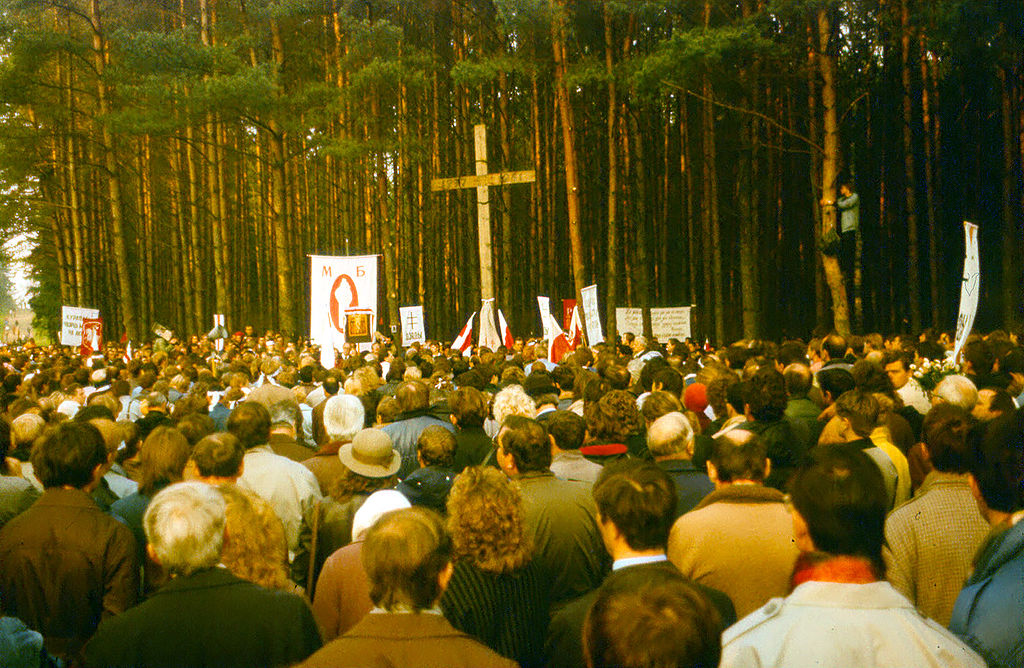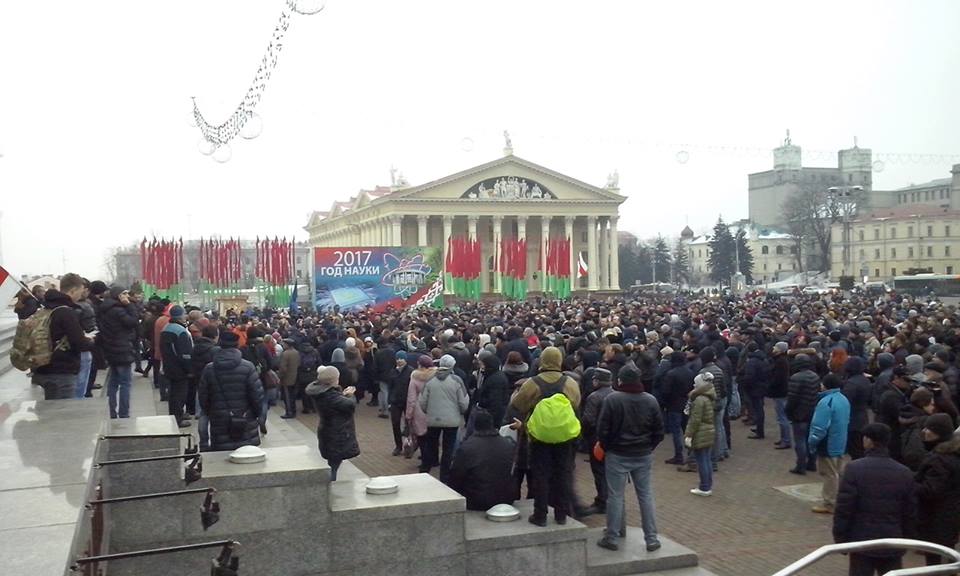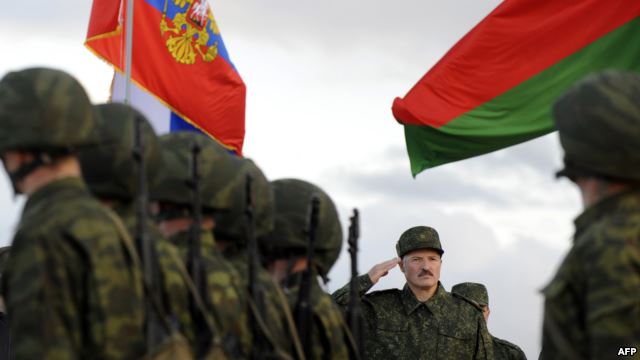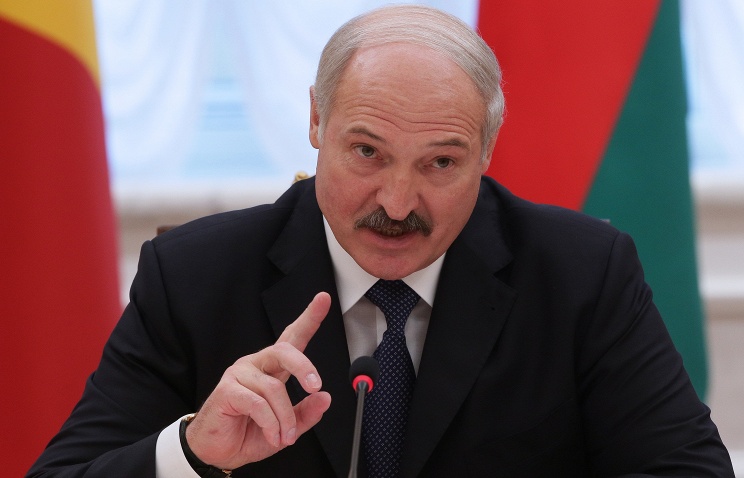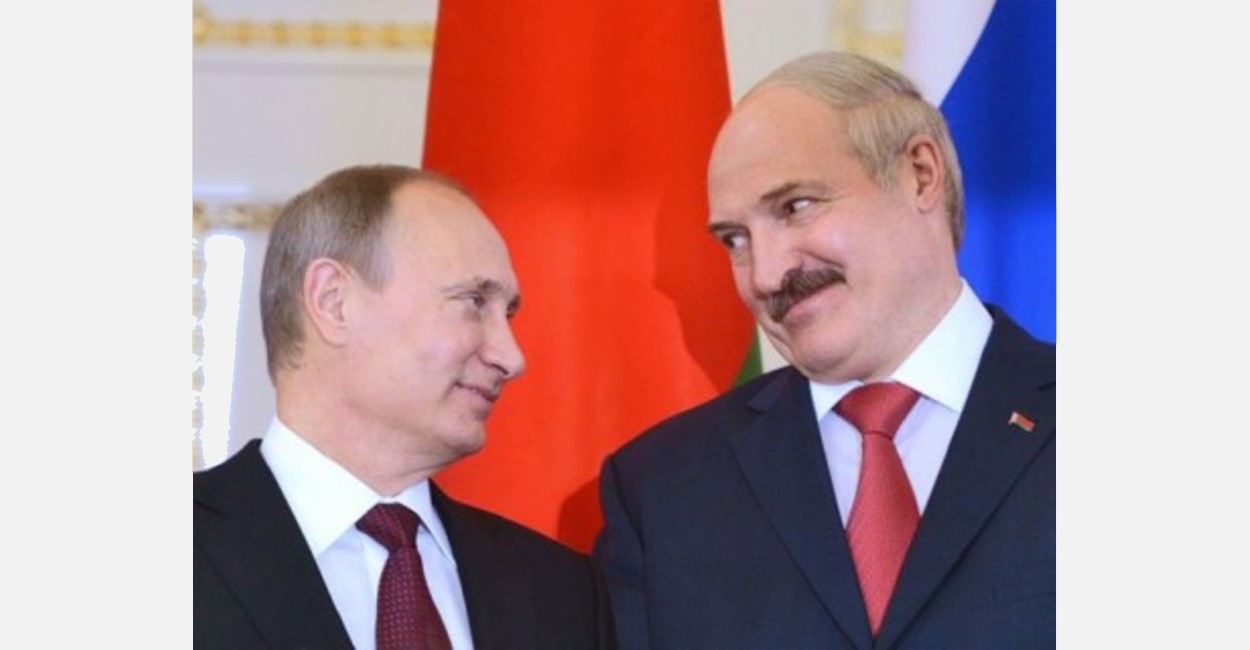Even as some are suggesting that Alyaksandr Lukashenka might disown the vagrants tax that has sparked mass protests in Belarus, the Minsk dictator is making his situation worse by threatening to build over the mass graves at Kuropaty, whose discovery by Zyanon Paznyak in 1988 energized the Belarusian national movement at the end of Soviet times.
More mass protests are slated for this weekend and with officials hunkering down to avoid talking with Belarusians, and Belarusian courts are bracing for a massive number of protests against the application of the decree.
And that has sparked speculation that Lukashenka will seek a way out, possibly blaming the decree on his subordinates in order to save face. But if that is his plan, he and his regime at the same time are only adding to their problems by attacking one of the most important symbols of Belarusian national identity, the Kuropaty mass graves.
In a commentary for Belsat, Belarusian political commentator Aleksandr Klaskovsky says that Lukashenka has gone to Sochi both to avoid being in his own country when his people are in the streets and in the hopes of having a meeting with Vladimir Putin who might do something to bail him out.
But that is probably unlikely because Lukashenka signed it and he needs to find a way to “save face.” Undoubtedly, however, Klaskovsky continues, Lukashenka “himself already isn’t happy that he at one point signed this decree.”
At the same time, however, Lukashenka is taking steps in another sector that almost certainly will make his situation more difficult. He has approved the construction of a business center on the site of the Kuropaty mass graves where more than 30,000 Belarusians were interred after being executed on Stalin’s order.
Belarusian activists have now erected a tent city there in order to block the construction, and they reportedly have the support of people in the region for both ethno-national and NIMBY reasons. The builders say they have all the necessary approvals from the state, but such claims are dismissed by the protesters.
The discovery of the mass graves there in 1988 by historian Zyanon Paznyak and the partial exhumation of the remains of those buried there contributed significantly to the rise of pro-democracy and pro-independence attitudes among Belarusians. (For the best survey of this, see David R. Marples, “Kuropaty: The Investigation of a Stalinist Historical Controversy,” Slavic Review, 53:2 (1994), pp. 513-523.)
In 1993, the Belarusian government took the area under its protection as a memorial site. But now, 24 years later, Minsk has decided to allow the construction of a business center there in order to make money. What does this say? Belsat asks. It says that the government can’t be trusted to keep its word.
If such views spread, they will only intensify the anti-vagrants tax movement and transform it into a genuinely ethno-national cause, one that will be far more anti-Moscow and anti-Russian and thus a cause that Lukashenka will have far greater difficulties in keeping it in check by turning to his Kremlin ally as he has in the past.
Related:
- Kuropaty: The Investigation of a Stalinist Historical Controversy
- Putin has as much to fear in Belarusian protests as Lukashenka does, Portnikov says
- Anti-Lukashenka protests spread across Belarus, as Moscow mulls response
- Belarus now prime candidate for Russian invasion, and anti-Lukashenka protests may hasten it
- Putin may exploit disarray in Washington to launch attack on Belarus, Minsk experts say

